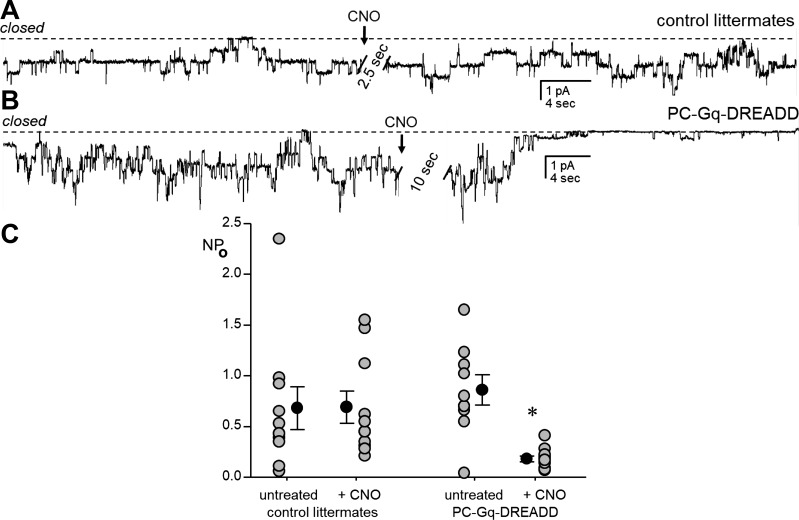Fig. 6.
Pharmacogenetic activation of Gq signaling in principal cells decreases epithelial Na+ channel (ENaC) activity. A and B: current traces of ENaC activity in cell-attached patches on apical plasma membranes of principal cells in split-open aldosterone-sensitive distal nephrons from littermate control (A) and PC-Gq-designer receptors exclusively activated by designer drugs (DREADD; B) mice before and after addition of 5 μM clozapine-N-oxide (CNO; arrow) to extracellular bath solution. Tubules were isolated from mice maintained on a Na+-free diet for 5–7 days, and patches were voltage clamped to −60 mV with downward inward current. The closed state current level is denoted by a dashed line. For the purpose of presentation, current traces were filtered at 40 Hz, slight corrections were made to baselines to adjust for slow current drifts, and the very noisy periods (2.5–10 s) during manual addition of drug to the bath were removed (clearly marked by hatched bars). C: means ± SE (black circles) and individual data points (gray circles) for ENaC activity [probability of open channel (NPo; where N is the number of channels in a patch and Po is the probability that these channels are open)] in tubules from untreated (n = 10 from 3 different mice) and 5 μM CNO-treated (~40 min, n = 10 from 3 different mice) littermate control mice and untreated (n = 9 from 3 different mice) and 5 μM CNO-treated (~40 min, n = 10 from 3 different mice) PC-Gq-DREADD mice. Mice of both sexes were used in approximately equal proportions. *Significantly lower than all other groups (by one-way ANOVA with Tukey’s honest significant difference post hoc test).

